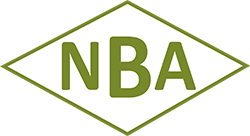Is virtual fencing the future on beef farms?
31st May 2021

New grazing technologies will allow beef producers to develop off-farm income opportunities while, at the same time, improving the efficiency of
their livestock businesses. One of these is virtual fencing.
Dr. Francis Lively from the Agri-Food and Biosciences Institute (AFBI) explained:
"Moving to a daily paddock scenario is the best way to deliver optimal quality grass cattle throughout the grazing season.
"Making this happen will require an investment in the required farm infrastructure. I am aware that many beef farmers now have off-farm jobs. As
a result, their actual time on the farm must be put to best use.
"One way of not having to physically move cattle on a daily basis, is to use a form of virtual fencing system. AFBI is currently trialing this new
technology," he added.
Virtual fencing in paddocks
According to Lively, moving to daily grazing paddocks, as opposed to set stocking will increase grass utilisation by 19% ; improve animal
production per hectare by 33% and boost output by £656 (€737) per hectare.
Lively spoke at a recent beef webinar, jointly hosted by AFBI, the College of Agriculture, Food and Rural Enterprise (CAFRE), Livestock and
Meat Commission (LMC), Northern Ireland Meat Export Association (NIMEA), National Beef Association (NBA) and Ulster Farmers' Union (UFU).
He confirmed that grass is the cheapest feed source available on all ruminant farms. It is also a highly nutritious feed.
Lively continued: "High quality grass can replace the need for expansive concentrates. Grass production also sequesters carbon in the soil. In
addition, grass-produced beef is a desirable product with well defined health benefits."
Grass growth
According to the AFBI scientist, grass is a good energy source, which can support high levels of animal output. However, quality is dependent on
stage of growth, stage in the season and sward composition.
"Spring grass is a highly nutritious feed source for beef cattle. Late autumn grass is similar in quality to that of top quality silage," he said.
Grass utilisation on beef farms across Northern Ireland is currently averaging 4.1t of dry matter (DM) per hectare (ha). The equivalent figure for
the dairy sector is 7.1t.
Recent AFBI research has confirmed that securing an extra 1t of grass DM can improve returns by £160 (€180). This figure is probably higher
now, given the recent uplift in beef prices.
However, if the increase in output is accompanied by a 5% increase in grass quality, the improvement in returns can be further increased to £218
(€245) per hectare.
Producing more grass will allow beef farmers to improve their stocking rates. Improving the quality of the grass available to stock will help reduce
the requirement to feed concentrates.
AFBI research has also confirmed that lower nitrogen usage on beef farms accounts for a significant proportion of the difference in the grass output levels they achieve, relative to dairy businesses.

